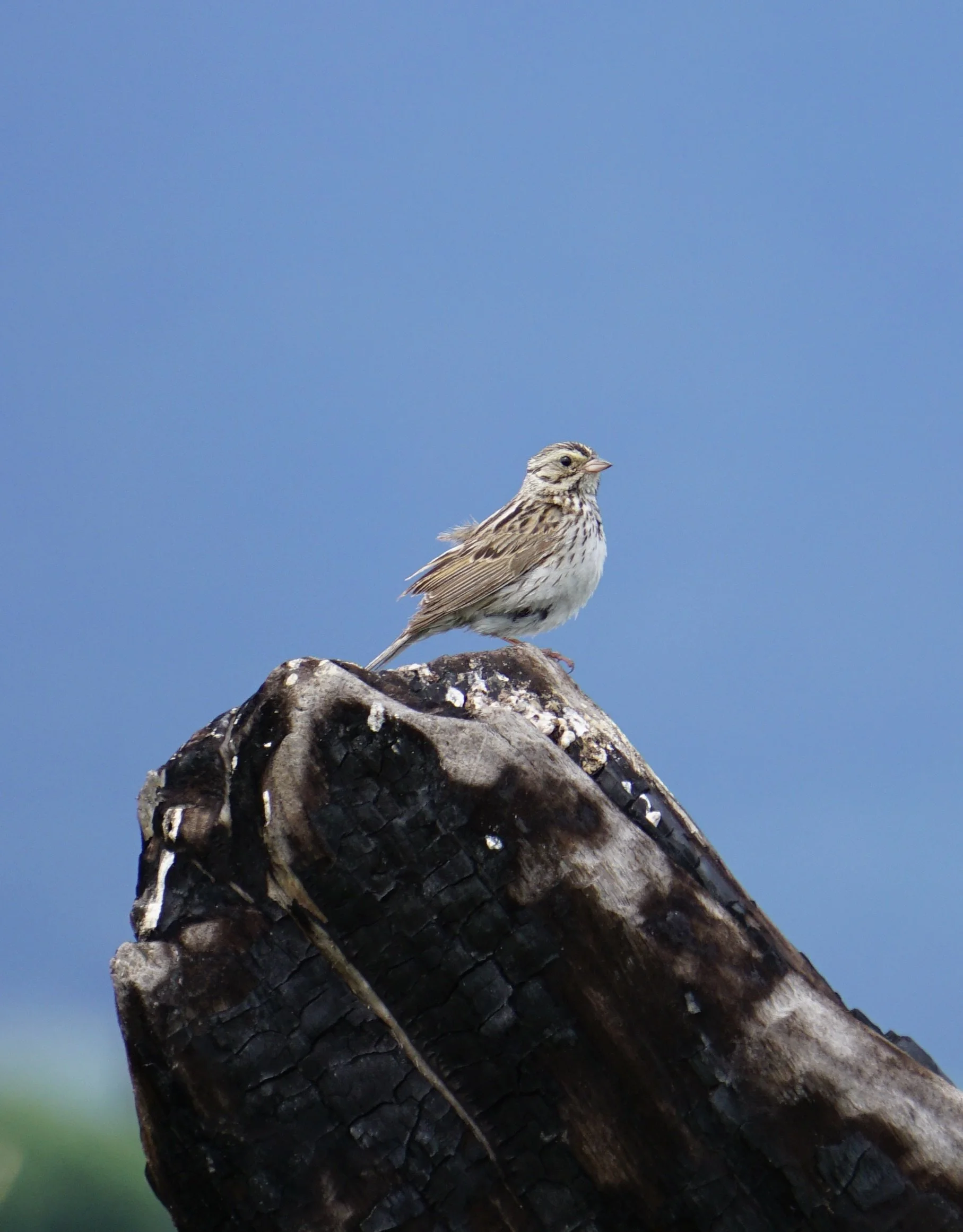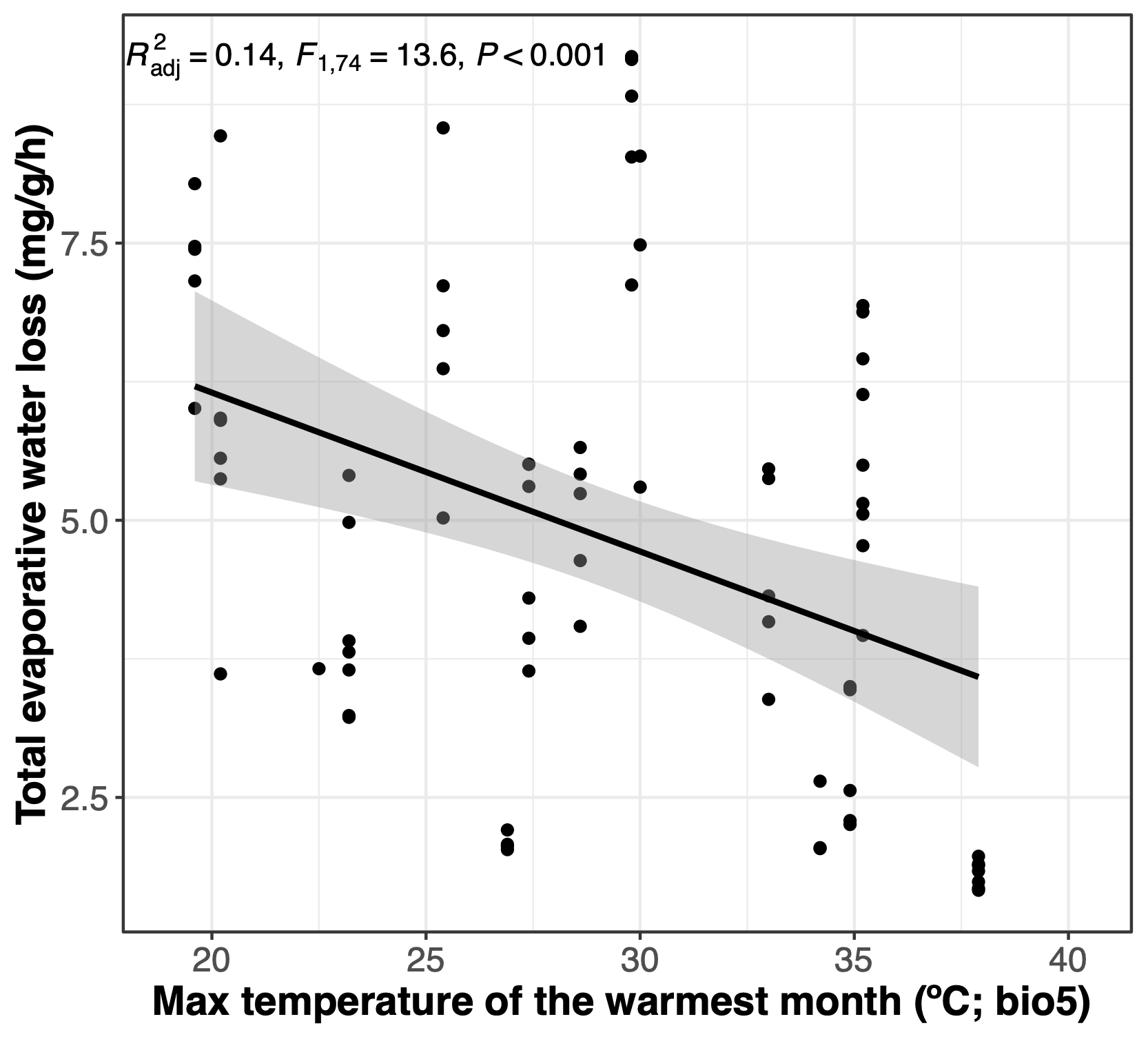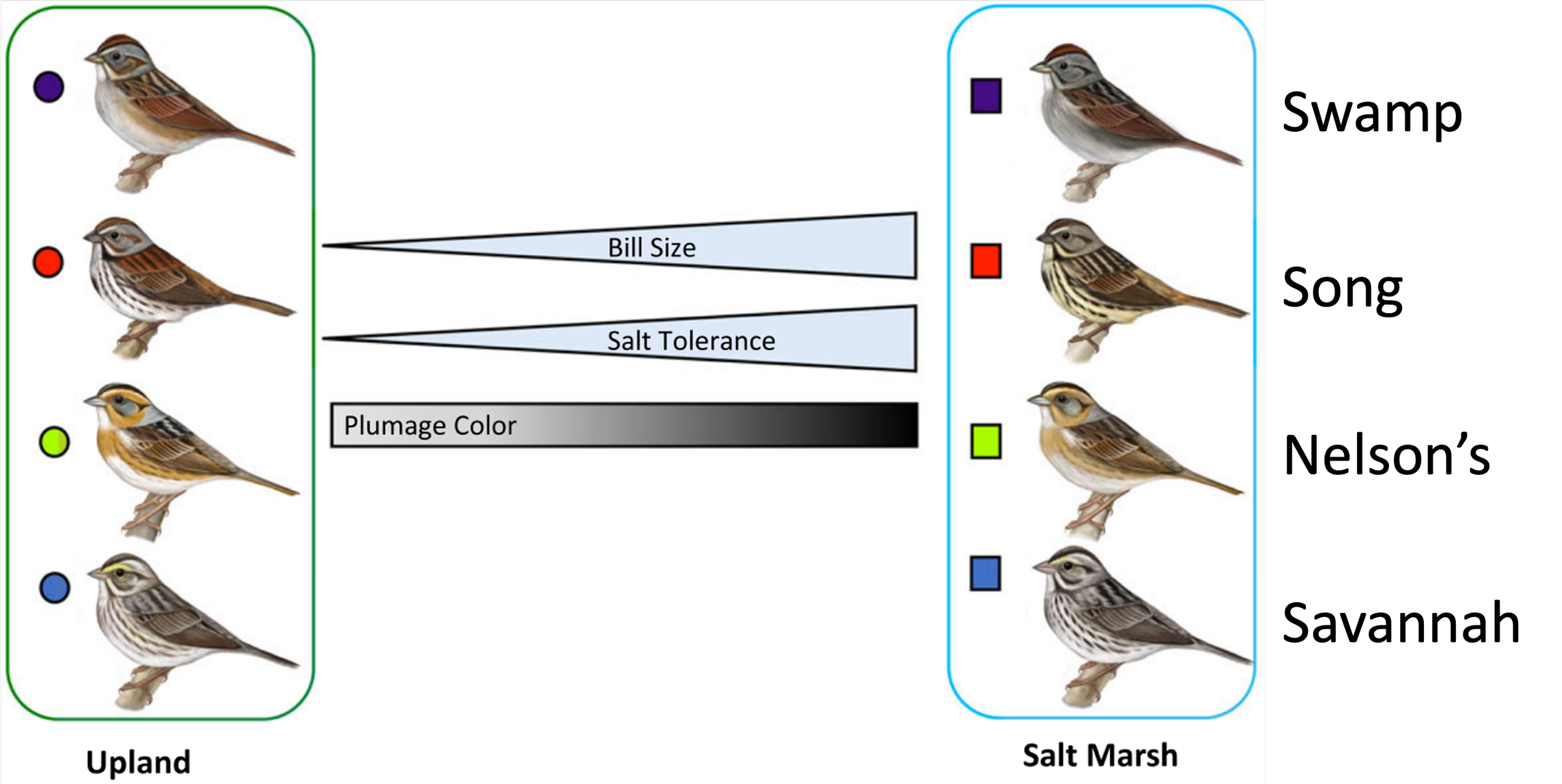Research
Research in the lab is motivated by a fascination for how birds can thrive in so many different habitats around the world. We incorporate insights from the genetic level to whole organism physiology to uncover how birds have solved the problem of survival in extreme environments. In turn, we believe that a detailed mechanistic, evolutionary, and ecological understanding of how animals respond to different environmental pressures will be essential for predicting resilience and vulnerability to future environmental change.
Physiological adaptation to extreme environments.
Alpine, desert, and salt marshes represent extreme environments that impose unique survival challenges. The animal species found thriving in these environments often exhibit extensive divergence from close relatives in physiological, morphological, and behavioral traits. By studying evolutionary divergence of physiological systems within these animals, work in the lab aims to advance understanding of the evolutionary processes that can facilitate or impede physiological adaptation to environmental change. See papers below for examples of how we analyze patterns of divergence at the genomic, molecular, organ system, and whole organism level within a demographic and ecological context.
Genetic basis of local adaptation.
Adaptation to local environmental conditions is pervasive in widespread animal species and results in geographic variation in morphological, physiological, and other traits. This phenotypic variation may arise from selection on genotypic variation, phenotypic plasticity, or genotype by environment interactions. To assess the contributions of genetic variation to local adaptation, we combine analyses of neutral population structure and demography with correlations between genotypic variation and environmental variation (e.g. temperature, salinity) in widespread songbirds. Ultimately, this work complements efforts to understand physiological divergence across environmental gradients. By pinpointing genetic variants under selection across spatial gradients we can generate new hypotheses about the mechanisms enabling survival in response to divergent ecological pressures.
Population responses to anthropogenic stressors.
The millions of specimens housed in natural history collections around the world preserve a record of past responses to anthropogenic change. Emerging technologies from sequencing of ancient DNA to micro-CT scanning are unlocking novel opportunities for using these specimens to reconstruct past responses to anthropogenic change. Work in the lab takes advantage of museum collections to look at how climate and landscape change have interacted to shape morphological and genomic change over time in birds.
Building genomic resources for conservation
The genomic toolkit contributes valuable information for the effective conservation and management of species. This ranges from delineating population management units to monitoring levels of genetic diversity to predicting vulnerability to climate change. Enabling the use of this toolkit for any given species requires the collection and sequencing of genetic samples, generation of reference genomes, and analysis of 10s to 100s of sequenced genomes from across a species distribution. Through collaboration with different agencies and consortiums (e.g. California Conservation Genomics Project), we contribute to the generation of reference genomes using third generation sequencing technologies, conduct landscape genomic analyses of various at risk species, assess adaptive capacity within species, and use comparative genomics to assess the impacts of human activities on different species.




